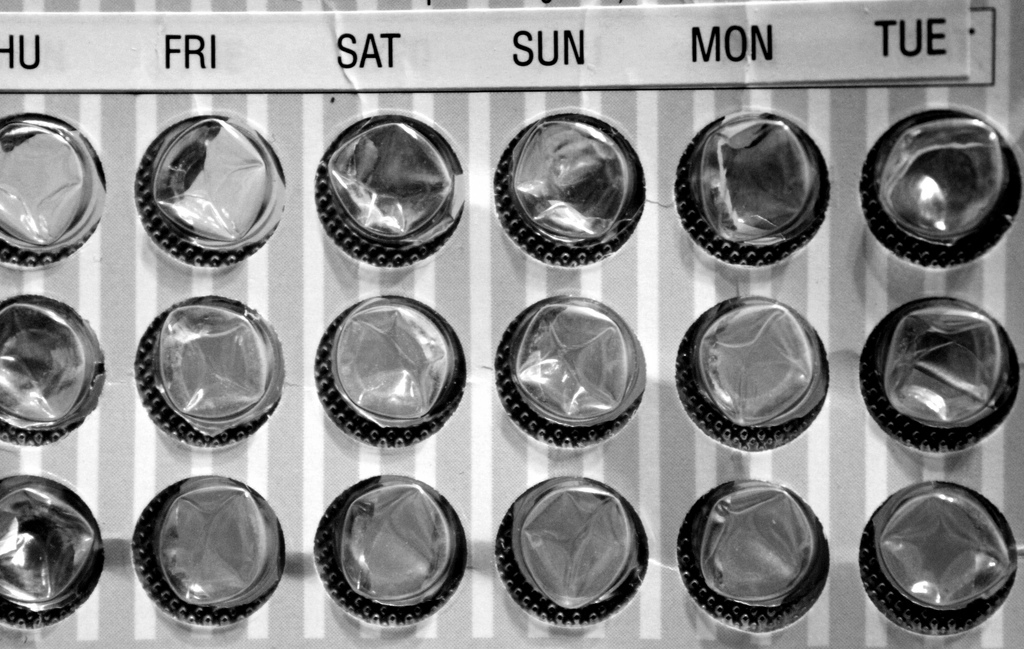Birth control pills (BCPs) have continued to be a hot topic and a controversial subject for both doctors and patients for some time. Questions that always seem to arise are: How safe are birth control pills? Which contraception method is right for my body? What are the long-term effects? How can I safely stop taking birth control pills and go natural?
If you have any of these questions, then you’ve come to the right place. In this article I hope to answer some questions you may have about birth control pills, as well as show the healthy reasons why you may want to consider avoiding them.
There are different types of combination birth control pills that contain estrogen and progestin. These are referred to as “monophasic,” “biphasic,” or “triphasic.”
- Monophasic birth control pills deliver the same amount of estrogen and progestin every day.
- Biphasic birth control pills deliver the same amount of estrogen every day for the first 21 days of the cycle. During the first half of the cycle, the progestin/estrogen ratio is lower to allow the lining of the uterus (endometrium) to thicken as it normally does during the menstrual cycle. During the second half of the cycle, the progestin/estrogen ratio is higher to allow the normal shedding of the lining of the uterus to occur.
- Triphasic birth control pills have constant or changing estrogen concentrations and varying progestin concentrations throughout the cycle. There is no evidence that bi- or triphasic birth control pills have any advantages over monophasic birth control pills.
According to CDC statistics, over 17% of women ages 15-44 in the United States are using birth control pills as contraceptives. Another study in June of 2014 reports “with over 62 million U.S. women in their childbearing years (15-44), about 43 million of them (70%) are at risk of unintended pregnancy– that is, they are sexually active and do not want to become pregnant, but could become pregnant if they and their partners fail to use a contraceptive method correctly or consistently.”
Many women are in tune with their bodies and attempt to reduce the risk of unintended pregnancy by taking precautions with contraceptives. However, I have found that many women are not properly informed about the various natural methods of contraception and are too quickly deciding on BCPs.
What Effect Do Birth Control Pills Have On Your Body?
Hormones in birth control pills suppress the natural formation and production of estrogen and progesterone in the human body. This artificially causes suppression of ovulation. In order to prevent pregnancy, birth control pills interrupt the natural cycle and instead fill the body with artificial hormones to control ovulation. These chemical imbalances are known to cause many problems with long-term use such as estrogen dominance, and even autoimmune conditions.
Among the most dangerous possible side effects of birth control pills, which increase in women ages 35 or older (especially in those who smoke), are blood clots and strokes. The artificial hormones in birth control pills may increase the risk for breast, ovarian, and liver cancers. However, there have been conflicting results in studies conducted on this matter.
BCPs also have been shown to increase TBG (Thyroxine Binding Globulin) in our bodies that can lead to problems with the thyroid hormones available. So, if you have problems maintaining a normal thyroid profile, especially free T4 and free T3 levels, BCPs may be contributing to this. And if you don’t have known problems with your thyroid, you may be told you do. In my experience, BCPs are not usually considered when a patient is having problems balancing their thyroid hormones.
Some Other Possible Side Effects of BCPs Include:
- Nausea
- Weight gain
- Sore or swollen breasts
- Small amounts of blood, or spotting, between periods
- Lighter periods
- Mood changes
The following side effects, easily remembered by the word “ACHES,” are less common but more serious. If you experience any of these, contact your doctor immediately. If you cannot reach your doctor, go to an emergency room or urgent care center for evaluation. These symptoms may indicate a serious disorder such as liver disease, gallbladder disease, stroke, blood clots, high blood pressure, or heart disease. They include:
- Abdominal pain (stomach pain)
- Chest pain
- Headaches (severe)
- Eye problems (blurred vision)
- Swelling or aching in the legs and thighs
As always, each case and type of birth control pill varies. The dosage of hormones and length of use will determine the potential side effects and risks associated with it. Before starting BCPs, have an in-depth discussion with your doctor about the various forms of birth control pills, as well as possible side effects. Be sure to discuss your personal health and family history.
Follow Your Doctor’s Guidance
With all of the negative impacts that birth control pills can have on the body, it’s imperative to start taking back your body’s natural cycle and be safe about contraceptive choices.
Other methods of contraception are available, each with associated risk. It is known that condoms have an 18% failure rate. Spermicides, when used alone, have a failure rate of about 21%. When the two are used together, the first year failure rate is reduced to about 2.5%. Methods such as single-rod subdermal implantation (Nexplanon/Implanon/Implanon NXT) also have high doses of synthetic hormones and the possible side effects associated with them. However, they are very effective at preventing pregnancy, with a failure rate of 0.05%.
Instead of continuing to pump your body full of artificial hormones, or taking the risk with condoms and spermicidals, consider tracking your monthly fertility patterns to take back control over your body and your family planning methods.
Please follow your doctor’s guidance for discontinuing BCPs and beginning any other method.
How Does Fertility Awareness Method Work?
Your fertility pattern is the number of days a month when you are fertile (able to get pregnant), days when you are infertile, and days when fertility is unlikely, but possible. This tracking method is called Fertility Awareness Method (FAM). By understanding the natural cycle of a woman’s ovulation, it can help to determine which days the body is most fertile, and naturally take care of contraceptive methods.
First we must understand the typical menstrual cycle to know how to track your own fertility. The average woman’s menstrual cycle lasts 28 days (day one is the first day of the menstrual period). Not everyone is on a 28-day cycle however, and not everyone ovulates in the middle of this cycle. Each woman is a unique case, which can be determined by a variety of factors. Usually, you’re most fertile two to three days prior to ovulation, and 12-24 hours after ovulation.
In order to determine ovulation, a tracking of your temperature can show the thermal shift in basal temperatures. Body temperatures rise by 0.4-0.6 degrees Fahrenheit after ovulation and can be measured by using a sensitive basal thermometer right before waking up (I recommend this thermometer by Tempir). Before ovulation, your body temperature is typically 96 to 98 degrees F. Record the numbers daily on a fertility chart to track the differences and analyze where you are in your cycle.
Additionally, you can track changes in your cervical mucus, which can increase the effectiveness of the chart tracking. Using both methods is better than one alone, however both together are not 100% fool-proof! Your cervical mucus changes multiple times during your cycle. See below for a typical pattern of mucus changes during a 28-day cycle. (Source: http://www.webmd.com/baby/charting-your-fertility-cycle).
- Days 1-5: You get your period.
- Days 6-9: Vagina is dry with little to no mucus.
- Days 10-12: Sticky, thick mucus appears, gradually becoming thinner and whiter.
- Days 13-15: Mucus becomes thin, slippery, stretchy, and clear, similar to the consistency of egg whites. This is the most fertile stage.
- Days 16-21: Mucus becomes sticky and thick again.
- Days 22-28: Vagina dries.
Tips For Tracking
- Take your temperature the same time every morning before getting up from bed.
- Don’t do anything before measuring your BBT, for best readings.
- Take temperature by the same method every time (vaginally, orally, or rectally).
- Make sure your hands are clean when checking cervical mucus.
- Note the color and consistency with your fingers.
- Track both of these with your fertility chart for best accuracy.
Many online sources and other fertility tracking mechanisms are available that you may consider purchasing to help with the tracking. If you prefer using your smartphone to track your fertility, consider downloading the Period Tracker app for Android or IOS, and make sure that you stay with your same method; whichever you choose, in order to be the most effective. Just like any contraceptive method, it is only most effective when executed 100% of the time. When FAM is properly and consistently followed it is very effective. Most studies show it has a failure rate of about 1%.
Most importantly, discuss this method with your doctor and partner before changing your current form of contraceptive. Making healthy lifestyle choices is an important part of your overall wellness. Eliminating artificial hormones is a great way to take back your natural cycle and avoid side effects in order to achieve optimal health and wellness.
Also, if you are taking BCPs for acne or PMS there are safe, and very effective, natural remedies for these which I frequently recommend. Please do not hesitate to email me with any questions you have.








